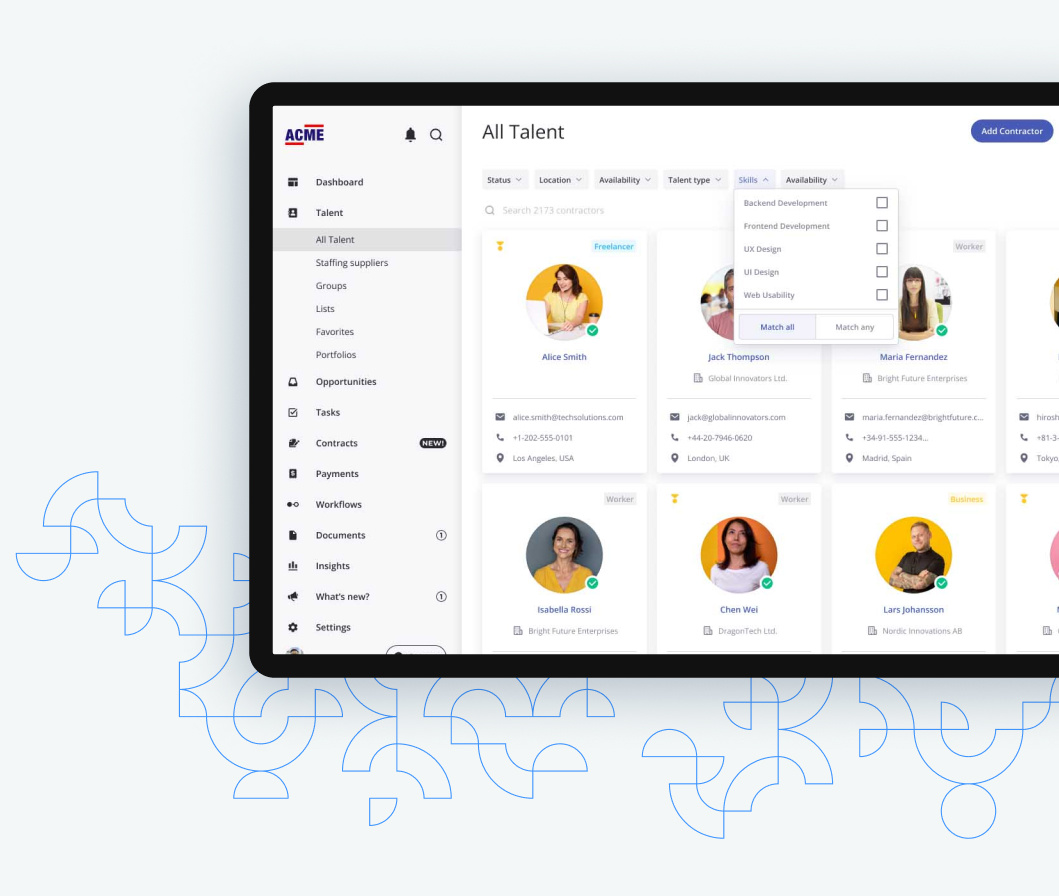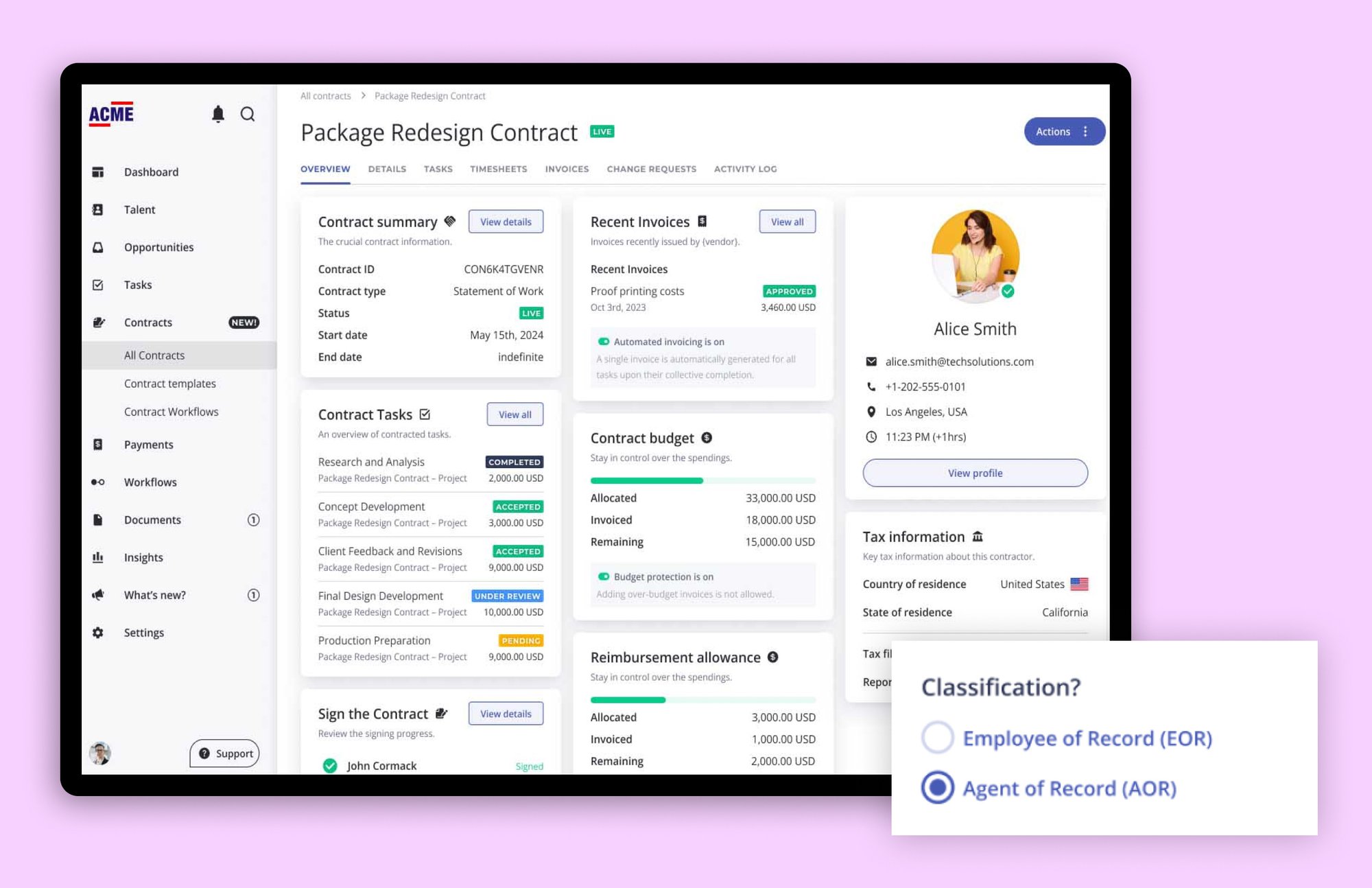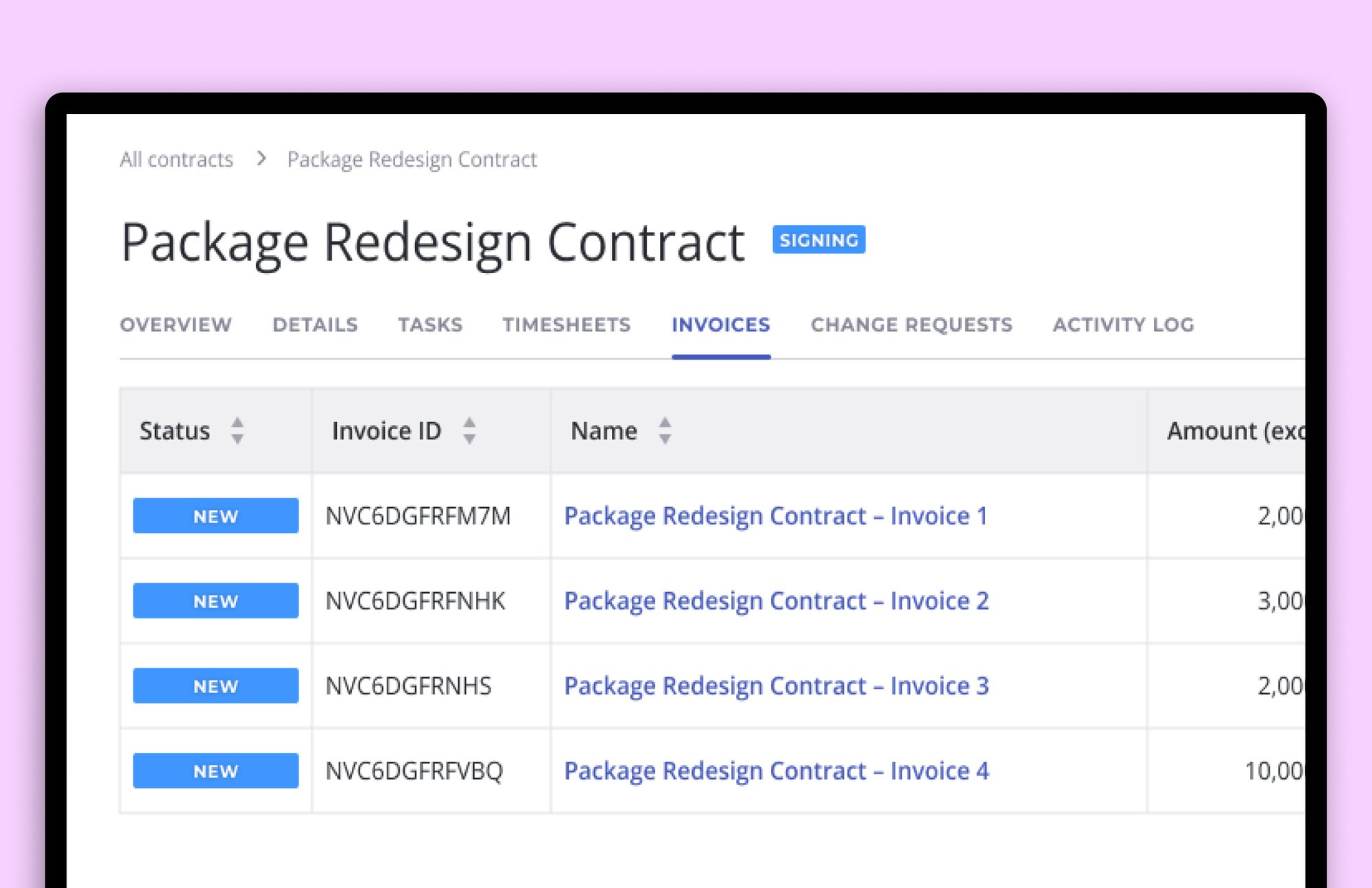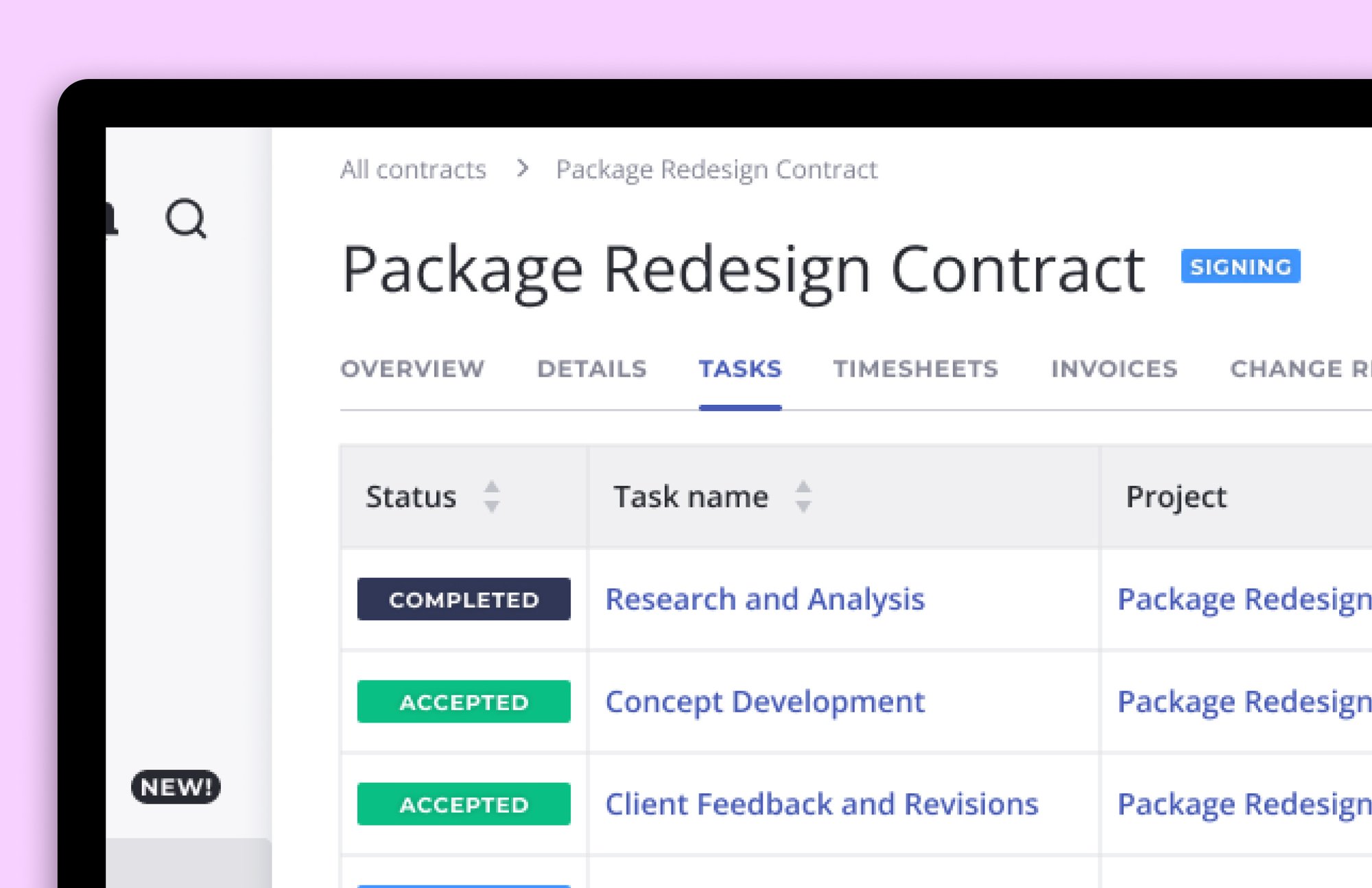Contingent Workforce Management
Find, Onboard, and Grow Your Freelance Workforce
Schedule a call and see how we can help you manage independent contractors, streamline hiring management, and scale your workforce with confidence and significant cost savings.

Onboarding
Onboard Confidently and Compliantly
Create custom onboarding workflows that ensure your freelancers and contingent workers are set up for success while maintaining full compliance throughout the process. Automate document collection, streamline approvals, and tailor onboarding steps to meet the specific needs of your workforce, reducing administrative burden and mitigating risk.
Direct Sourcing
Take Control of Freelancer Hiring
Build a centralized talent pool for easy hiring management and cost-effective recruiting, whether you need agency workers or temporary workers for contingent work. Quickly identify top talent, streamline engagement, and reduce dependency on third-party staffing agencies to optimize costs and efficiency.
-DarkBlue%20copy.jpg?width=2000&name=Screen-Talent%20Directory%20(TBU)-DarkBlue%20copy.jpg)
Custom Workflows
Customize Your Workflows for Maximum Efficiency
Create tailored processes for onboarding, managing your contingent workforce, and paying freelancers with ease, ensuring optimal workforce strategy. Automate approvals, integrate compliance checkpoints, and adapt workflows to meet the unique needs of your business while improving productivity and reducing manual effort.
Reporting and Analytics
A powerful, data-driven analytics engine to improve compliance and drive operational excellence. Gain insights to help you mitigate risk and make informed decisions for managing your contingent workforce long term. Track performance metrics, monitor trends, and generate real-time reports to optimize costs, boost efficiency, and ensure compliance.


Contract Lifecycle Management
Oversee the lifecycle of your freelancer contracts, from creation to renewal. Automate approvals, track key milestones, and ensure compliance every step of the way.

Invoice Management
Take the pain out of paying freelancers and make life easier for you and your team. Streamline invoicing, reduce errors, and ensure timely payments with automated processing.

Project Tracking
Monitor the progress of tasks and projects in real-time for maximum efficiency. Stay organized, track deadlines, and collaborate seamlessly to keep work on schedule.
Features for Enhanced Flexibility
Features that fine-tune your platform, ensuring full control over branding, vendor management systems (VMS) integration, and contract oversight.
ID Verification
Oversee the lifecycle of your freelancer contracts, from creation to renewal.
White Labeling & Branding
Make it your own by customizing the platform to reflect your brand.
Private Talent Pool
Centralize management with searchable and customizable database of top talent.
Let's Talk About Your Growth Goals
Collaborate with one of our experts for a genuine conversation about your current challenges and business growth objectives. No sales pitch, just an honest discussion about what you're working to achieve and how we might help.
“The customer experience from the team at Worksuite has been remarkable. They make us feel like we’re the most important client they have. It’s a great product, with great service.”
Allen Larson
VP of Talent Acquisition and Resource Director
JACK MORTON

Read Case Study

Let’s Build Your Custom Demo Experience
Share your challenges and priorities. From there, we’ll design a personalized demo that highlights exactly how our platform can deliver results for your business.